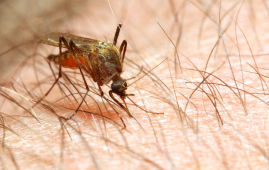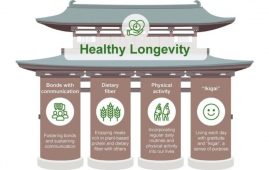

Too many women worldwide – particularly the poorest women – continue to die from cervical cancer; a disease which is both preventable and treatable. So, WHO and HRP have launched a new guideline to help countries make faster progress, more equitably, on the screening and treatment of this devastating disease.
Ending suffering from cervical cancer
Last year, in 2021, more than half a million women contracted cervical cancer, and about 342 000 women died as a result – most in the poorest countries. Quick and accurate screening programmes are critical so that every woman with cervical disease gets the treatment she needs, and avoidable deaths are prevented.
WHO’s global strategy for cervical cancer elimination– endorsed by the World Health Assembly – calls for 70% of women globally to be screened regularly for cervical disease with a high-performance test, and for 90% of those needing it to receive appropriate cervical cancer treatment. Alongside vaccination of girls against the human papillomavirus (HPV), implementing this global strategy could prevent more than 62 million deaths from cervical cancer in the next 100 years.
“Effective and accessible cervical screening and treatment programmes in every country are non-negotiable if we are going to end the unimaginable suffering caused by cervical cancer,” says Dr Princess Nono Simelela, Assistant Director-General for Strategic Programmatic Priorities: Cervical Cancer Elimination. “This new WHO guideline will guide public health investment in better diagnostic tools, stronger implementation processes and more acceptable options for screening to reach more women – and save more lives.”
A shift in care
The new guideline include some important shifts in WHO’s recommended approaches to cervical screening.
In particular, it recommends an HPV DNA based test as the preferred method, rather than visual inspection with acetic acid (VIA) or cytology (commonly known as a ‘Pap smear’), currently the most commonly used methods globally to detect pre-cancer lesions.
HPV-DNA testing detects high-risk strains of HPV which cause almost all cervical cancers. Unlike tests that rely on visual inspection, HPV-DNA testing is an objective diagnostic, leaving no space for interpretation of results.
Although the process for a healthcare provider obtaining a cervical sample is similar with both cytology or HPV DNA testing, HPV DNA testing is simpler, prevents more pre-cancers and cancer, and saves more lives than VIA or cytology. In addition, it is more cost-effective.
More access to commodities and self-sampling is another route to consider for reaching the global strategy target of 70% testing by 2030.
WHO suggests that self-collected samples can be used when providing HPV DNA testing. Studies show that women often feel more comfortable taking their own samples, for instance in the comfort of their own home, rather than going to see a provider for screening. However, women need to receive appropriate support to feel confident in managing the process.
Recommendations respond to the link between HPV and HIV
Women who are immunocompromised, such as those living with HIV, are particularly vulnerable to cervical disease; they are more likely to have persistent HPV infections and more rapid progression to pre-cancer and cancer. This results in a six-fold higher risk of cervical cancer among women living with HIV.
In recognition of this, the new guideline include recommendations which are specific for women living with HIV. This includes using an HPV DNA primary screening test followed by a triage test if results are positive for HPV, to evaluate the results for risk of cervical cancer and need for treatment. The global recommendations also advise that screening start at an earlier age (25 years of age) than for the general population of women (30 years of age). Women living with HIV also need to be retested after a shorter time interval following a positive test and following treatment than women without HIV.
“With these new guidelines, we must leverage the platforms already developed for HIV care and treatment to better integrate cervical cancer screening and treatment to meet the health needs and rights of the diverse group of women living with HIV to increase access, improve coverage, and save lives” Dr. Meg Doherty, Director, WHO Department of Global HIV, Hepatitis and Sexually Transmitted Infections Programmes.
Every intervention counts to eliminate cervical cancer
Data showing where countries around the world currently stand in relation to their burden of cervical cancer and coverage for screening and treatment, are due to be published. These country profiles can help ministries of health identify where their programmes need strengthening and measure progress towards the 2030 targets.
For a cervical cancer prevention and control programme to have impact, strengthening patient retention and ensuring rapid treatment of women who screen positive for HPV or cervical pre-cancer is a fundamental priority.
“Cost-effectiveness of screening tests is important for scaling up programmes, but other aspects of the public health approach to eliminating cervical cancer are also vital,” said Dr Nathalie Broutet, WHO Department of Sexualand Reproductive Health and Research and HRP. “What matters most is the coherence of every country’s programme in ensuring the continuum of care: that all women have access to screening, health care providers are informed in a timely manner about the results of the screening test and can in turn share this information with their client, and that women can access appropriate treatment or referral if needed.”
WHO calls for all women to ensure they get regular cervical cancer screening tests in line with the recommendations of their local health authority.
Summary recommendation for the general population of women |
Summary recommendation for women living with HIV |
WHO suggests using either of the following strategies for cervical cancer prevention:
|
WHO suggests using the following strategy for cervical cancer prevention among women living with HIV:
|

more recommended stories
 Ultramarathon Physiology: What HCPs Should Know?
Ultramarathon Physiology: What HCPs Should Know?Ultramarathon Metabolism: What Happens to the.
 High-Intensity Training and Oxidative Stress Insights
High-Intensity Training and Oxidative Stress InsightsNew Evidence Linking High-Intensity Training and.
 Sterilized Fermented Beverage for Obesity: New Evidence
Sterilized Fermented Beverage for Obesity: New EvidenceEarly Insights Into a Sterilized Fermented.
 Cardiovascular Risk and Sudden Cardiac Death in Diabetes
Cardiovascular Risk and Sudden Cardiac Death in DiabetesRising Sudden Cardiac Death (SCD) Risk.
 Perinatal Mental Health Challenges Highlighted in New Study
Perinatal Mental Health Challenges Highlighted in New StudyMental Health Challenges in New Parents:.
 Walking Speed Before Hip Replacement Predicts Recovery
Walking Speed Before Hip Replacement Predicts RecoveryNew Evidence Points to a Simple,.
 How Soybean Oil Impacts Weight Gain and Metabolism
How Soybean Oil Impacts Weight Gain and MetabolismWhy Soybean Oil May Affect Metabolism.
 New Malaria Prevention Insights From African Biostatistics
New Malaria Prevention Insights From African BiostatisticsHow New Data Is Reframing Malaria.
 World Summit Outlines Core Principles for Healthy Longevity
World Summit Outlines Core Principles for Healthy LongevityWhy Healthy Longevity Demands a New.
 Gut Immune Cells and Long-Lasting Antiviral Protection.
Gut Immune Cells and Long-Lasting Antiviral Protection.Breakthrough Findings on How Gut Immune.

Leave a Comment